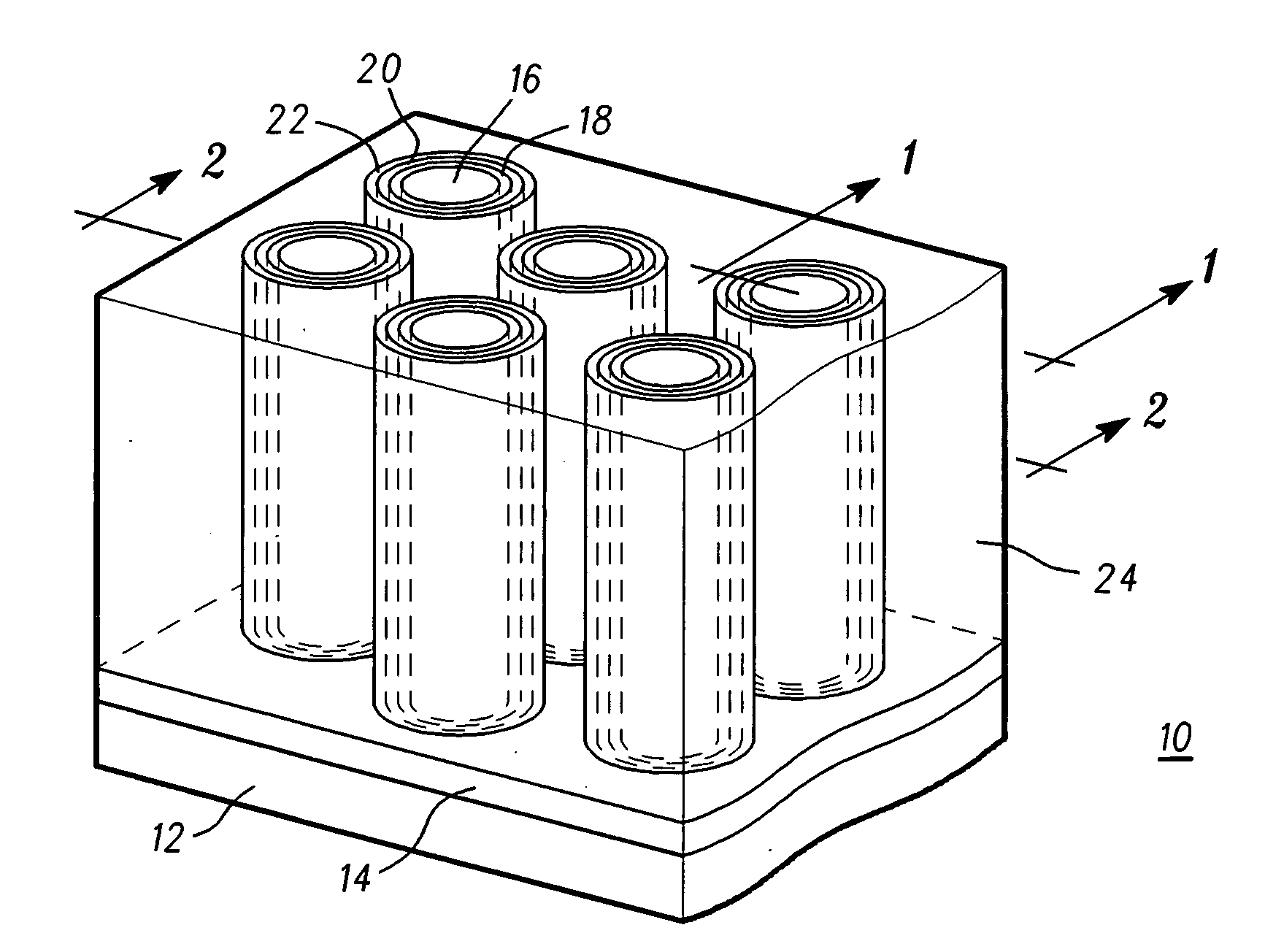Nanosized,dye-sensitized photovoltaic cell
a photovoltaic cell, dye sensitization technology, applied in the direction of nanotechnology, electrical apparatus, semiconductor devices, etc., can solve the problems of high cost high cost of solar energy, etc., to reduce the charge recombination rate and charge transport time
- Summary
- Abstract
- Description
- Claims
- Application Information
AI Technical Summary
Benefits of technology
Problems solved by technology
Method used
Image
Examples
Embodiment Construction
[0014]The following detailed description of the invention is merely exemplary in nature and is not intended to limit the invention or the application and uses of the invention. Furthermore, there is no intention to be bound by any theory presented in the preceding background of the invention or the following detailed description of the invention.
[0015]Carbon nanotubes have demonstrated a significantly enhanced conductivity and robustness compared to the metallic materials used in the known art. A photovoltaic cell comprising a plurality of carbon nanostructures, i.e., carbon nanotubes, carbon nanowires, or carbon fibers covered by first and second oxides and a sensitized material, e.g., a dye, provides for improved efficiency by reducing the recombination rate of electrons and holes, and improving the transport of the photoexcited electrons through the first and second oxides. The structure described herein accomplishes five advantages over known art. First, the long nanostructures ...
PUM
 Login to View More
Login to View More Abstract
Description
Claims
Application Information
 Login to View More
Login to View More - R&D
- Intellectual Property
- Life Sciences
- Materials
- Tech Scout
- Unparalleled Data Quality
- Higher Quality Content
- 60% Fewer Hallucinations
Browse by: Latest US Patents, China's latest patents, Technical Efficacy Thesaurus, Application Domain, Technology Topic, Popular Technical Reports.
© 2025 PatSnap. All rights reserved.Legal|Privacy policy|Modern Slavery Act Transparency Statement|Sitemap|About US| Contact US: help@patsnap.com


